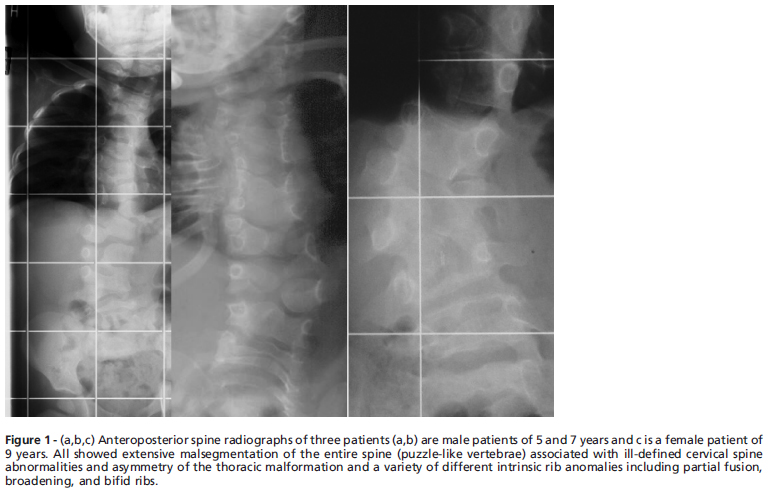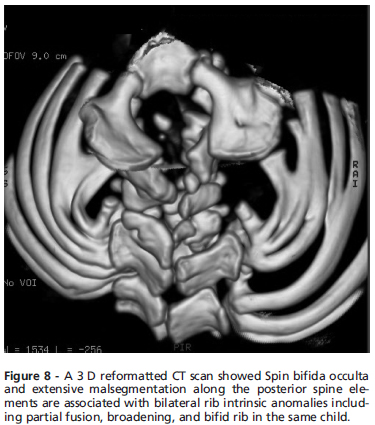OBJECTIVE: The aim of this study was to perform a detailed tomographic analysis of the skull base, craniocervical junction, and the entire spine in seven patients with spondylocostal dysostosis syndrome. METHOD: Detailed scanning images have been organized in accordance with the most prominent clinical pathology. The reasons behind plagiocephaly, torticollis, short immobile neck, scoliosis and rigid back have been detected. Radiographic documentation was insufficient modality. RESULTS: Detailed computed tomography scans provided excellent delineation of the osseous abnormality pattern in our patients. CONCLUSION: This article throws light on the most serious osseous manifestations of spondylocostal dysostosissyndrome.
Spondylocostal dysostosis syndrome (SCD); Plagiocephaly; Torticollis; Scoliosis; CT scan










